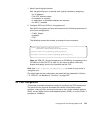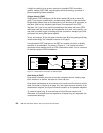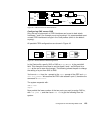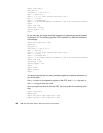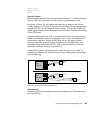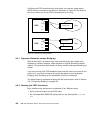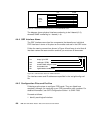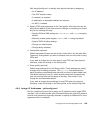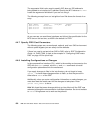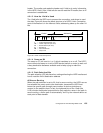Configuration of IP-Forwarding Media Cards 129
Edit /etc/grifconfig.conf
to identify each logical interface by assigning:
• An IP address
• The GRF interface name
• A netmask, as required
• A destination or broadcast address, as required
• An MTU, if needed
2. Specify FDDI card parameters in the Card profile. All but the first two are
optional and default to the most common settings, so normally you should
be just fine omitting this step.
• Specify SAS and DAS settings as
single or dual, with single being the
default.
• Manually enable optical bypass
on or off with off being the default.
• Specify ICMP throttling settings.
• Change run-time binaries.
• Change dump variables.
3. Load profile (optional).
Global executable binaries are set at the Load profile in the hw-table field.
These only change when you want to execute new run-time code in every
FDDI card.
If you want to change the run-time code in one FDDI card (per physical
interface), make the change in the Card profile.
4. Dump profile (optional).
Global dump settings are in the Dump profile. These settings are usually
changed only for debug purposes. The
keep-count field specifies how
many dumps are compressed and stored at one time for each media card.
The default setting is zero (0), which actually stores two dumps per day
(the current dump and the first dump of the day). Use caution if you
change the recommended default.
If you want to change dump settings for one FDDI card (per physical
interface), make the change in the Card profile, in the dump/config field.
4.4.6 Assign IP Addresses - grifconfig.conf
Edit the /etc/grifconfig.conf file to assign an IP address to each logical FDDI
interface. You can also provide other information about the logical IP network
to which that interface is physically attached, or specify a different MTU in the
arguments field, for example.



